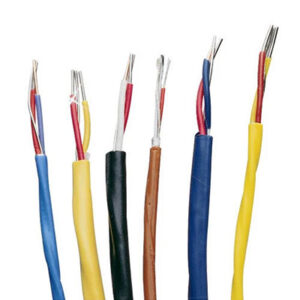
Home >> Thermocouple Cables
Thermocouple Cables Suppliers


A Thermocouple Cable of two dissimilar metal wires coming together to create a temperature measurement junction. Heating the connection point of both metals creates a thermoelectric current known as a See beck current.
Use Thermocouple Cable to make thermocouple elements, or to connect thermocouples to instrumentation. Thermocouple extension Cable should only be used to connect thermocouples to instrumentation, and copper wire should never be used.
What is the maximum length of thermocouple wire?
There are many factors that can impact the usable length of a thermocouple. As a guideline, under 100 feet with 20 AWG or thicker wire in an area free of electromagnetic interference usually is fine. Two of the main factors in determining useable thermocouple length are total loop resistance and preventing electrical noise getting into the signal. Because different thermocouple wires are made of different materials, the resistance will vary based on the type as well as the wire diameter and length.
The allowable loop resistance is affected by the input resistance of the amplifier circuit to which it is attached. But as a guideline, typically the objective is to keep the total loop resistance under 100 ohms. Loop resistance is determined by multiplying the length in feet by the resistance per double feet (remember 1 foot length of run includes 1 foot from each of the two t/c wires) as shown in “Resistance Vs Wire Diameter” table for thermocouple type and gauge.
Remember in your calculations to include the probe (when used/applicable) in addition to the wire length. The second major factor in running a thermocouple wire is to keep it away from any electromagnetic fields. Thermocouple wire creates a low voltage signal and should not be run near power wires, motors, etc. To help minimize noise pickup, a metal over braid or twisted shielded wire is commonly used.

